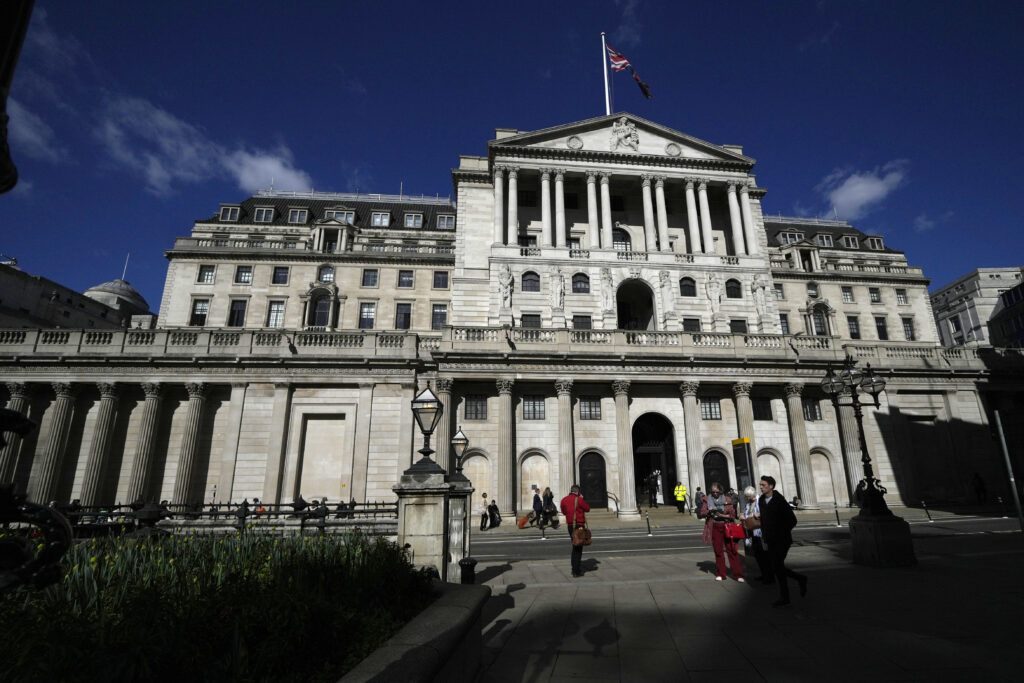Bank of England Steps in to Stabilize Markets
Newslooks- LONDON (AP)
The Bank of England on Tuesday expanded its emergency effort to quash upheaval on financial markets unleashed by the government’s plan to slash taxes, saying fluctuations in bond prices posed a “material risk” to Britain’s fiscal stability.
The U.K. central bank said it will now buy inflation-linked securities — which offer protection from inflation — as well as conventional government bonds as it seeks to “restore orderly conditions” in the market. Purchases will total up to 10 billion pounds ($11 billion) a day split evenly between both types of bonds, and the program will end Friday as originally planned, the bank said in a statement.
The bank broadened the program after yields on government bonds jumped again Monday, returning to the levels reached immediately after the government last month announced plans for wide-ranging tax cuts without saying how it would pay for them. That raised concerns about a surge in government borrowing that spooked markets, sending the pound plunging to a record low against the dollar and endangering pension funds.
The bond-buying program addresses concerns on the so-called secondary market, where investors trade bonds previously purchased from the government. Bond prices tend to fall as concerns about a borrower’s ability to repay its debts increase. This pushes the yield — or the return investors realize on their money — higher because they receive the same interest rate on a smaller investment.
Investors are concerned that the government’s plans will lead to high levels of debt and fuel further inflation, which is already running at a near 40-year high of 9.9%. The Institute for Fiscal Studies, an independent think tank, said Tuesday that stabilizing government debt levels will require “difficult decisions” on a combination of spending cuts and tax increases.
Pension funds have been particularly hard hit by the turmoil over government spending priorities, with some being forced to sell bonds to cover payment obligations.
While investment funds have made “substantial progress” in reducing their risks, there were further big moves in government bond prices at the beginning of the week, particularly for index-linked bonds, the bank said.
“Dysfunction in this market, and the prospect of self-reinforcing ‘fire sale’ dynamics pose a material risk to U.K. financial stability,” the bank said in a statement.
The market turmoil began on Sept. 23, when Treasury chief Kwasi Kwarteng introduced the government’s economic growth plan in the House of Commons.
The plan includes 45 billion pounds of tax cuts and at least 60 billion pounds of increased spending to help shield homes and businesses from steep increases in energy prices this winter. The government hasn’t yet detailed how it will pay for the program, except to say faster economic growth will increase tax revenue.
In an effort to ease concerns, Kwarteng said Monday that he would release the government’s detailed plans on Oct. 31, three weeks earlier than scheduled.
Critics say the government’s target for average economic growth of 2.5% a year is substantially higher than most economists predict and will be difficult to achieve.
The government may have to cut spending by as much as 62 billion pounds a year to achieve targets for controlling public debt, the IFS said in an analysis released Tuesday.
“Recent events have illustrated the importance of a credible strategy and plan for fiscal sustainability,″ the IFS said. “Just as financial markets — which ultimately have to lend the money required to plug the gap in the government’s fiscal plans — might be unconvinced by plans underpinned by an assumption of a miraculous uptick in growth, so too might they be unconvinced by plans underpinned by vague promises of public spending cuts far into the future.”








